For 95 percent of the market, $2,000 is a lot of money for a pair of loudspeakers; even my friends who are professionals or own their own businesses wince whenever I share new loudspeaker announcements that are above that amount.
“I can’t justify spending that amount of money.”
“College tuition just emptied my bank account.”
“Do you know how long I have been waiting for my new BMW?”
Audiophiles are also not a normal group of people; self-indulgent, over-the-top, narcissism abounds and a fair number of us suffer from OCD behaviour.
Some of us sit in front of their systems chewing on kosher Biltong, pretending that everything is ok and that the men in the white coats will go easier this time with their rubber gloves.
The Q Acoustics 5000 Series have been an unqualified success and for good reason — they work well with a wide range of amplifiers and it is very hard to argue with the value that they represent.
What makes the Q Acoustics 5050 unique is that it offers so much performance for under $2,000 — in a category with some excellent floor standing loudspeakers from DALI, PSB, Wharfedale, and KEF in the same price range.
The more we listen to products like the 5050, DALI Oberon 5, Wharfedale Evo 4.4 and Focal Theva N°2 — the clearer it becomes that music listeners don’t have to go broke in 2024 building a high-end audio system.
Having spent almost an entire year with the award-winning Q Acoustics 5040 and 5020, we waited with bated breath for the launch of the flagship 5050; although we did have an advance preview of it at CAF 2023.
We also had the opportunity to discuss the new M40 and 5050 with Q Acoustics’ PR Manager, Nick Renshaw, and Sales and Marketing Director, Jamie McKay, on the eCoustics podcast which you can listen to here.

The 5050 joins the 5000 family, comprising of the 5010 bookshelf ($749/pair), 5020 standmount ($899/pair), 5040 floorstander ($1,499/pair), with the 5090 center channel ($599) completing the line-up for a home cinema speaker set-up.
As with the entire 5000 series, the 5050 arrive in a choice of four modern but classic finishes that complement any living space, including the introduction of a new stylish lighter wood veneer.
High quality finishes include Satin Black, Satin White, Santos Rosewood and Holme Oak.
The 5050 floor standing model comes with stylish solid aluminium stabilizers that feature top adjustable spikes for easier levelling adjustment, while durable low-profile speaker terminals provide a tidy appearance, enabling the speaker to be placed closer to the back wall if required.

Specifications
- Bass unit: 2 x 150 mm (6.0 in)
- Treble unit: 1 x 25 mm (1.0 in)
- Frequency response (-6dB): 37 Hz – 30 kHz
- Nominal impedance: 6.0 Ω
- Minimum impedance: 3.0 Ω
- Sensitivity (1m, 2.83V @ 1kHz): 91.8 dB/w/m
- Recommended amplifier power: 25-150 W
- Crossover frequency: 2.7 kHz
- Effective volume: 39.7 L
- Dimensions (HxWxD) 1017 x 386 x 336mm (40.0 x 15.2 x 13.2 in) including spikes and stabilizer
- Weight (per loudspeaker): 21.6 kg (47.6 lbs)
Innovation?
- C3(pronounced ‘C-cubed’) Continuous Curved Cone design in the mid/bass driver ensures smoother high-frequency integration with the tweeter and superior bass dynamics.
- Sophisticated, clean and contemporary design with dark acrylic baffle motif mirrors the minimalist C3 Continuous Curved Cone profile.
- With a design taken from the Concept series but in a new housing, the high-frequency driver is fully hermetically sealed and mechanically isolated from the front baffle to protect from internal cabinet pressure and resonances from the mid/bass driver.
- Ground-up mid/bass driver design delivers increased power handling.
- Point-2-Point™ (P2P) internal bracing stiffens the cabinet to minimize lower frequency vibrations, while focusing stereo imaging and improving soundstage.
- Four Helmholtz Pressure Equalizers (HPE) tubes are fitted inside the 5050 to reduce internal pressure and standing waves.

High-frequency driver design
Based on the tweeter design principle found in the newest Concept series, the 1-inch high frequency driver unit is hermetically sealed and mechanically isolated (floating) from the baffle to prevent internal pressure modulations from within the cabinet and adjacent mid/bass driver.
The inner chamber is also carefully vented for lower distortion, with a lower crossover point for seamless integration through the crossover region.
Mid/bass driver design
At the heart of the ground-up mid/bass driver design is the C3 Continuous Curved Cone. The cone’s geometry requires good motor strength for optimal performance.
Substantial magnets are coupled to large voice coils to increase motor strength – the result is a 50% increase in power handling and control over a comparable driver with 25.4 mm voice coil.

Setup & How We Listened
One of the things that stood out about the 5050 during our brief encounter at CAF 2023 was the level of bass output — which should be the case considering the larger bass woofers/drivers and increased cabinet volume.
Experience tells us never to make any definitive judgements about the sound of any loudspeaker being demonstrated in a hotel room and that was certainly true about the Q Acoustics 5050.
Do they output a lot of bass? Without a doubt.
That reality is that they need some space from the wall behind them — a minimum of 36 inches and I don’t advise using the bass port bungs to tame it down.
Something odd happens (at least in my listening space) to the clarity in the mid bass through the lower midrange that I can’t wrap my head around.
The imaging capabilities of both the 5040 and 5050 are impressive and it was not my experience with either one that you need to alter their toe-in angle to achieve a rather solid stereo image.
Pointed straight ahead in my 16′ x 13′ x 9′ den, both loudspeakers created a rather vast soundstage and pinpoint imaging.
Because of my rather erratic travel schedule and therapy over the past few months, I only had a limited amount of time to listen to the 5050 with the recently reviewed IsoAcoustics GAIA III Speaker Isolation Feet — but what I did ascertain was that they work rather effectively with these loudspeakers.
Their performance, however, doesn’t really matter in the context of this review because 99.9% of the potential customers will never use isolation feet with these or any other loudspeaker and my comments about their performance are with the stock feet installed.
The 5050 come with solid aluminum stabilizers that include top adjustable spikes for easier leveling adjustment. The pair of stabilizers are easy to install and I had both speakers finished in less than 10 minutes.
As was the case with the 5040, I made the decision to raise the 5050 off the wood floor by placing them on concrete slabs that are isolated from the floor with rubber feet.

Listening
A Bissel Kishka?
For those who did not grow up in a Yiddish speaking household, that translates to “would you like a little piece of kishka?”
Deli mavens will chime in that there is no such thing as a “little piece of kishka” because even the smallest slice cooked in beef gravy could stop your heart faster than a few packages of cigarettes after running a marathon — but my bigger point is that a little bit of fat never killed anyone.
Except for the guy sitting across from me in 1982 at a Toronto Deli I will not name out of respect for the sandwich that he was consuming.
It was not my beloved Pancer’s in case anyone is wondering.
The only thing that ever died there was my soul recently.
How does any of this apply to the Q Acoustics 5050?
To have a better understanding on their perspective and tonal balance, one really needs to read my comprehensive series of reviews on the 5040, which will create a solid foundation for this review.
Unlike the 5040, which I found to be extremely neutral sounding and incisive, the 5050 offer marginally less precision and a lot more kishka. Perhaps even some biltong dipped in gravy — which is just my guilty conscience punishing me for the next 50 years.
There is more coloration in the sub bass, upper bass, and lower midrange and that gives almost everything you will listen to through them additional tonal weight and impact.
They hit harder, fill a larger space more easily, and also come across as slightly laid back in comparison.
The clarity is still there, but male voices do not sound as thin (compared to the 5040) and bass notes come across as more natural sounding.
Female vocals are delivered with layers of texture propelling them further into your listening space. Both speakers utilize the same tweeter and offer a lot of detail which is one of the best features of the entire 5000 series.
For those familiar with the Q Acoustics 3050i which I use daily in my dining room system but have criticized for being far too polite in the entire treble range, the new tweeter in the 5040 and 5050 is a bit of a shock.
Forward. Airy. Quick. Layers of detail without ever becoming fatiguing.
What does that mean for system building?
This is one specific scenario where the amplifier needs to color rather neatly between the lines or you will discern a softening of edges and the loss of detail; especially in the upper bass and lower midrange.

The 5050 can handle a lot of power without even flinching. The Cambridge Audio Edge A ($6,500 USD) is most certainly overkill from a price perspective, but the combination certainly demonstrated that the 5050 can handle 200 watts of solid state muscle without any issues.
This is also where one notices some obvious differences between the 5040 and 5050. The bass range on the 5040 is precise, quick, detailed, and well defined. The larger 5050 offers slightly less precision and a lot more impact and weight from the sub bass through the upper bass.
Whereas the 5040 will sound completely different with every type of amplifier and their neutrality makes them somewhat of a blank canvas that one can experiment with — the 5050 work better with something that is more neutral sounding and offers a slightly forward sounding presentation.
My original comments about placement remain the same. Both speakers need room to breathe. They can overload a smaller room rather easily if you don’t pull them away from the corners and put 2-3′ of space between them and the wall behind them.
Both are exceptional at imaging.
It was fascinating to listen to both loudspeakers with the same tracks. They were fed a wide range of material from the Blue Note Tone Poet Series on vinyl, hi-res tracks on TIDAL and Qobuz including Nick Cave, Talking Heads, Sia, Nirvana, U2, the Cure, Ella Fitzgerald, Haydn, Dolly Parton (sue me), and Johnny Cash.
The 5040 offers an almost ethereal presentation depending on the amplifier in the signal chain, whereas the 5050 was consistently fuller sounding from the sub bass into the lower midrange and required greater thought when it came to more affordable amplifier matches.
Unlimited Power?

When I reviewed the Naim NAIT 50 in December 2023, one of its most impressive moments came when I connected it to the Q Acoustics 3050i Loudspeakers that I have used in my dining room system for almost four years.
The 3050i can be a somewhat reticent sounding loudspeaker depending on the source equipment and amplification on the other end. The mid bass and midrange have more than enough impact and presence for my daily listening, but the treble is decidedly rolled off and it would be accurate to describe it as “overly polite” when it comes to its overall presentation.
Dull sounding gear need not apply ever in this scenario.
The NAIT 50 is an incredibly underrated piece of hardware and did a rather miraculous job of injecting some much needed energy in the 3050i without adding any hardness to the midrange and treble.
Can you drive the 3050i and the 5050 with only 25 to 30 watts of power?
The output increases to 40 watts into 4 ohms which is more than enough for the type of loudspeakers that will be paired with the amplifier.
Numbers don’t always tell the story and that was certainly the case with the NAIT 50 and 5050.
The NAIT 50 in a minimalist design that features 1 x MM phono input (RCA, 5mV), 2 x 5-pin DIN inputs, and a single 6.35mm headphone jack located on the front panel.
The amplifier is a brick and the all-metal construction inspired confidence from the first moment that I removed it from the packaging.
In the grand scheme of things, 10 pounds doesn’t sound like a lot but this is one solid amplifier. For many music listeners, it may be all that they ever need.
The binding posts are recessed receptacles that require banana pins; which worked perfectly with the multiple sets of Chord Company and QED loudspeaker cables I have in my collection.
The aluminum volume control feels sturdy and offers very smooth operation.
The power output of the NAIT 50 requires careful loudspeaker matching if one wants to fill a slightly larger space. The amplifier and loudspeaker combinations at home had zero issues filling the den (16′ x 13′ x 9′) and dining room (16′ x 10′ x 9′) with more than enough volume and impact.
Bass notes are never overly thick or sluggish through the NAIT 50 and whilst I would agree that the 5050 might need some additional shakshouka in its tuchas to feel more impactful, the NAIT 50/CXN100 combination gets very close.
The upper bass and lower midrange are superbly clean through the British box and male vocals get pushed slightly forward of the front plane of the loudspeakers and locked firmly in place.
The three British products work exceptionally well together.
Pacing is superb through the NAIT 50 and the darker tonal balance of the 5050 almost cries out for the clarity and top end energy of the Naim amplifier.

The other logical (and more affordable) option would be the Cambridge Audio Evo 150 Network Amplifier.
The Evo 150 offers a lot more power, a smoother sounding midrange and more robust sounding low end. The MM phono stage is also quite acceptable, although the Naim bests it on points in that category.
Both amplifiers offer a very strong sense of pacing and overall flow — the 5050 reminds me more of the 3050i when it comes to its overall presentation and I don’t see how anyone with either amplifier would be unhappy.
Before I closed down the system and packed as I had a very long drive to Toronto ahead, I lowered the lights and cued up Nick Cave’s “Avalanche” (TIDAL) which has been a rather important bit of therapy for me lately.
The 5040 has impressed with the entire catalog from Cave and the Bad Seeds, but his cover of the late-Leonard Cohen’s track hits even harder through the 5050. The extra degree of tonal weight changes everything with the vocals and piano.
The first hour driving in the dark was uncomfortably quiet – and I was alone which was probably for the best as I dealt with a wave of shame and guilt.
Guess that “emotional” part of listening is real after all.

The Bottom Line
Music listeners are blessed in 2024 with an extremely long list of great sounding options in the loudspeaker category below $2,000 and it would appear that mainstream consumers are starting to pay attention. That’s a very good thing for the industry overall.
Brands like Q Acoustics have prioritized the $399 to $2,000 price range with their 5000 and forthcoming 3000c series and they have proven over the past decade that they know how to build great loudspeakers that are affordable.
It might shock some of you to learn how many members of the high-end audio press use their products at home as a reference at specific price points — guilty as charged and proud of it.
The Q Acoustics 5050 do so many things well, that it’s rather easy to forgive some of their aforementioned shortcomings — and that’s a rather short list.
The tonal balance is the greatest point of deviation from the award-winning 5040, which means that one needs to pay closer attention to their choice of amplification and separates.
Overly dark or warm might be too much of a good thing here and we would recommend focusing on amplification that can really take hold of the low end with some authority.
If your listening space is on the smaller side (a quick reminder that my den is 16′ x 13′ x 9′), the 5040 might be a better option if you are unable to pull the 5050 further out into the room to balance out their rather prodigious bass response.
Does it make sense to spend $2,000 on these?
The better question is figuring out which components to select to build a great sounding system around with these excellent loudspeakers that are priced far below their actual performance capabilities. A better deal you might not find if you have the physical space to set them up properly.
Kvetching that there is nothing “high-end” worthwhile owning in 2024 is a rather dead argument these days and the Q Acoustics 5050 belong at the top of your audition list.
Cons:
- Bass response might be too robust for smaller listening spaces
- Need more power to really open up and illuminate all of their strengths
- Not as detailed in the upper midrange and lower treble as some of its rivals
- Darker or warmer sounding amplification will make them sound too restrained
Pros:
- Very robust low end response that makes them ideal for music and movies
- Transparent presentation
- Precise imaging and wide soundstage
- Not difficult to set-up as long as you pay attention to the distance from the wall and corners
- Excellent build quality
- You need to spend more for this level of sonic performance from many of its rivals
Where to buy:
Related Reading:
- Q Acoustics 5040 Loudspeakers: Editor’s Choice 2023
- Q Acoustics 5020 Bookshelf Loudspeakers: Editor’s Choice 2023
- Q Acoustics 3050i & Magnepan LRS: The Audiophile System Builder
For more information: qacoustics.com













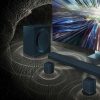

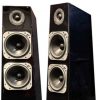
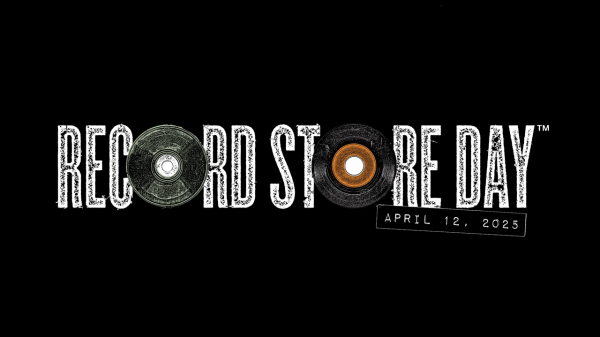


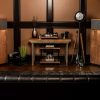

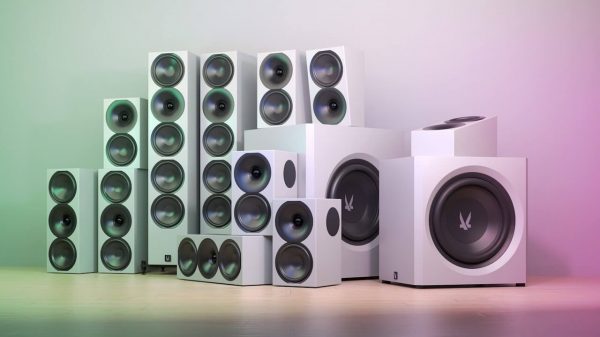
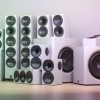
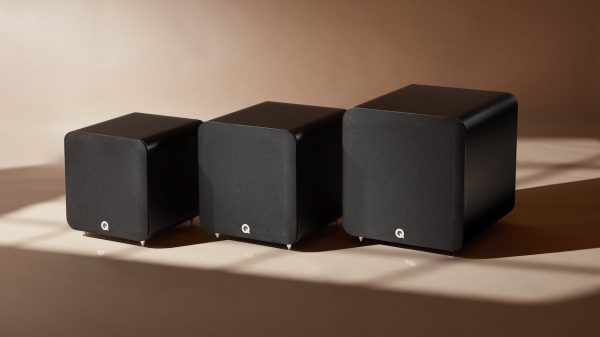














Asa
November 25, 2024 at 5:04 pm
Excellent review, Ian. I’m STILL waiting for that BMW, er, Audi or some such. It would appear that brands like Q Accoustics, SVS, and similar, are eating the lunch of more expensive offerings. Like you mentioned, much of the unobtanium speakers surfaced here will fall in that category for most of us. The value prop for these and similar will be category killers.
Can you comment on something I ran into the other day that the holding companies of some of these audiophile grade products are looking to consolidate and/or having a tough go?
Happy Thanksgiving!
Ian White
November 25, 2024 at 5:35 pm
Asa,
Appreciate the kind words about the review. Excellent speakers.
Can you forward me what you found or read? There are some internal industry issues for sure. And we know which companies.
Happy Thanksgiving.
IW
Asa
November 25, 2024 at 6:23 pm
Sure…it just came up in my Yt feed on my TV last week. Watched it, but don’t know how accurate it is or anything about this specific channel. Some interesting comments too.
Given the changes in retail/tech/audio/video overall, it wouldn’t surprise me.
https://youtu.be/18Aky9ZAcFg
Ian White
November 25, 2024 at 10:35 pm
Asa,
So…the Bose/McIntosh/Sonus faber acquisition is a completely different animal that requires its own discussion. Legacy audio brand with $3B in sales buying three (Sumiko) legacy audio brands. From what we have heard internally…people were not unhappy.
The Masimo story is more complex. Masimo’s Board of Directors wants to sell off Sound United (in one group or pieces) ASAP. It never fit within their core business and was a strange acquisition to many of us who know a lot of people at the brands that were purchased.
B&W, Marantz and Denon clearly have a large customer base and a lot of dealers who would be incensed to see those brands fold. I see them being sold off. D&M together and B&W to another company.
The other brands have zero momentum in the market and I don’t know enough about their financials to say if they are in good/bad shape.
Does the high-end have too many brands competing for the same customers? Yes.
Do I think that it is sustainable? No.
Most of the brands are not great at marketing and they do not support (ahem) the people who support them and bring them customers. YT and IG have also changed things.
I think within 5 years, a lot of brands will be gone. Especially the ones who are not marketing savvy.
IW
Trevor
November 26, 2024 at 3:50 pm
Last winter I purchased the 3050, a 2016 model designed by Karl Heinz Fink, they were a bargain at $400/pair (now out of stock) & I’m extremely happy with them. These later models all appear to be refinements of the 3050. Given the choice of the other manufacturers mentioned I would go with Dali. Their unique SMC technology is a differentiator. They have an excellent YT video describing its development. Cheers!
Asa
November 26, 2024 at 5:32 pm
Thanks for the helpful clarification, Ian. Love to see more info on this in a future article and/or podcast. As an Econ major long ago, I find this type of stuff fascinating (for this and other industries).
It also seems that many of the high-end brands can’t/won’t do marketing to the masses where it’s a waste of time/money, but don’t take adavantage of sites like yours and other review sites, to market their wares…which may also be a declining market. There’s also walking the fine line of ‘conflict of interest’.
It’s a bit like high-end cars, or any high-end product, where the masses get their airpods or Honda, and carry on, but the few, the proud, the OCD want a little [lot?] more, and willing to pay extra for the ‘sweetspot’ of sound or ___________. Beyond that, it’s marginal gains and the value for money doesn’t make much sense, at least for us wage earners.
Thanks again!
AB
Gatlaw
November 27, 2024 at 9:34 pm
I have owned Ohm Es, Boston Acoustic 8s, Wharfedale Emerald 99,97,95,91 Modus 1/6, Diamond Anniversary 7.2, speakers and pioneer sx780, sx3700, Studio Standard Pioneer, Nakamichi 2,Onkyo 5.2 channel theatre,receivers and a luxman 400 Watt power cube. I love the Wharfedales. I would love to blind test the Emerald range against the latest audiophile speakers to see whether they stack up. I have had friends with audiophile experience listen to the 99s and could not believe I got them from UBID for $120 delivered. They didn’t think I got a great deal they thought I got amazing speakers…I use the 95s, 91s and 7.2s in small rooms. I have a great ear and know how to listen to notice separation, sound stage, frequency response, etc. Side by side comparison is the only way to know for sure.